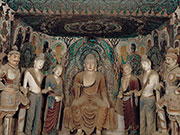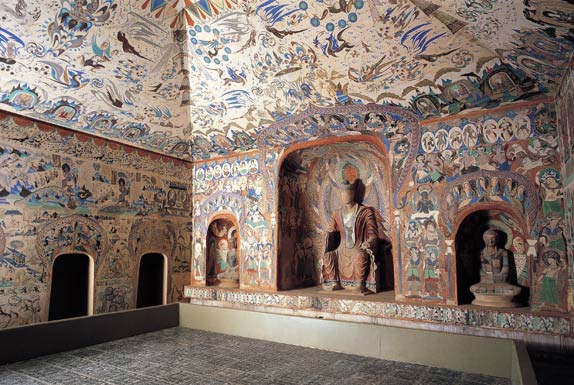UNESCO World Heritage site on CPPCC agenda

 0 Comment(s)
0 Comment(s) Print
Print E-mail CNTV, March 9, 2016
E-mail CNTV, March 9, 2016
Among China's cultural champions at this year's CPPCC is veteran member Fan Jinshi. She has devoted her entire career to the study and preservation of the sixteen-hundred-year-old Mogao Grottoes with their ancient wall paintings in Dunhuang, and she is continuing to advocate for their protection.
 |
|
[File photo] |
At 73 years old, Fan is back for her 24th appearance at the 'Two Sessions', and the Mogao Caves - a UNESCO World Heritage site - remain high on her agenda.
Since the 1980s, she has introduced several measures to protect the sites' environment and murals. These include restrictions on the number of visitors in order to control carbon dioxide and humidity levels.
"We realised that the more people there were in the cave, the more changes would happen to the micro environment and eventually to the paintings. We worked out the maximum permissible levels in order to restrict the number of people on site to 3,000 at a time," said Fan Jinshi, former head, Dunhuang Academy China.
Detection devices are now installed in every Mogao cave, and if acceptable CO2 and humidity levels are exceeded, the cave is temporarily closed, and visitors guided to other caves.
"If the light turns red, it means the cave is not available at the moment any more; it needs to take a rest. There are different detectors in the caves. They help monitor the environment, and at the same help give the visitors a better experience," Fan said.
Preservation efforts were further enhanced in 2014, when Fan and her team established a digital exhibition center. By offering a more detailed display of the 7 caves than is visible to the naked eye, the center has encouraged visitors to spend less time in the caves.
It took 11 years for this idea to come to fruition after Fan suggested it in a CPPCC proposal.
"Some people doesn't understand why I come here for the movie instead of the real paintings. But I have been observing for years and heard many visitors say the digital exhibition is even better than the caves," Fan said.
The Mogao Grottoes of Dunhuang were discovered in 1900 and have exercised a profound influence on Chinese fine arts ever since.






Go to Forum >>0 Comment(s)